Yanji is a energetic city located near the China-North Korea border. Here, you can experience the striking blend of traditional Korean ethnic culture and China’s modern development. One of the most visually captivating landmarks in Yanji is the Yanji Wanghong Wall. This guide will provide you with all the essential information about the most popular spot in Yanji.
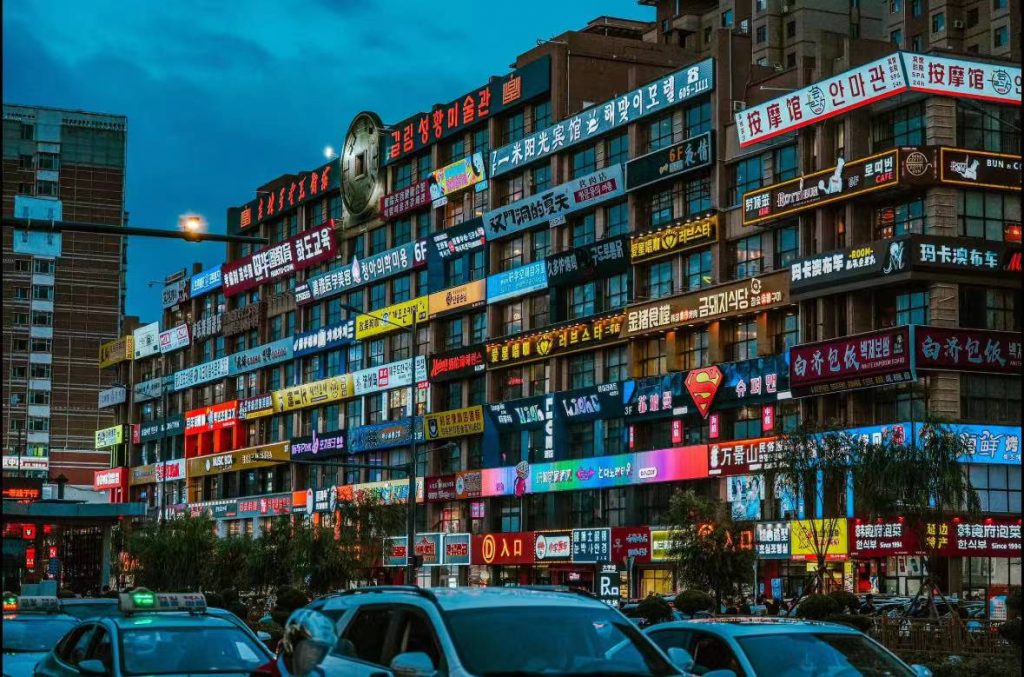
Table of Contents
WHAT IS THE YANJI WANGHONG WALL?
When you first see this name, you will instantly recognise the words “Wall” and “Yanji”. But what does “Wanghong” mean?
In Chinese, the word “Wanghong” has more than one meaning. It can refer to an internet celebrity, but it can also describe something that is famous on the internet. So, in the case of this wall, “Wanghong” signifies both that this place has gone viral online and that many internet celebrities frequently visit and livestream here.
This location is also known by other names, such as the Scrolling Wall or the Bullet-screen Wall (Dan Mu Qiang in Chinese). This nickname comes from the resemblance of the signs on the wall to the scrolling bullet-screen comments commonly seen on Chinese video platforms.
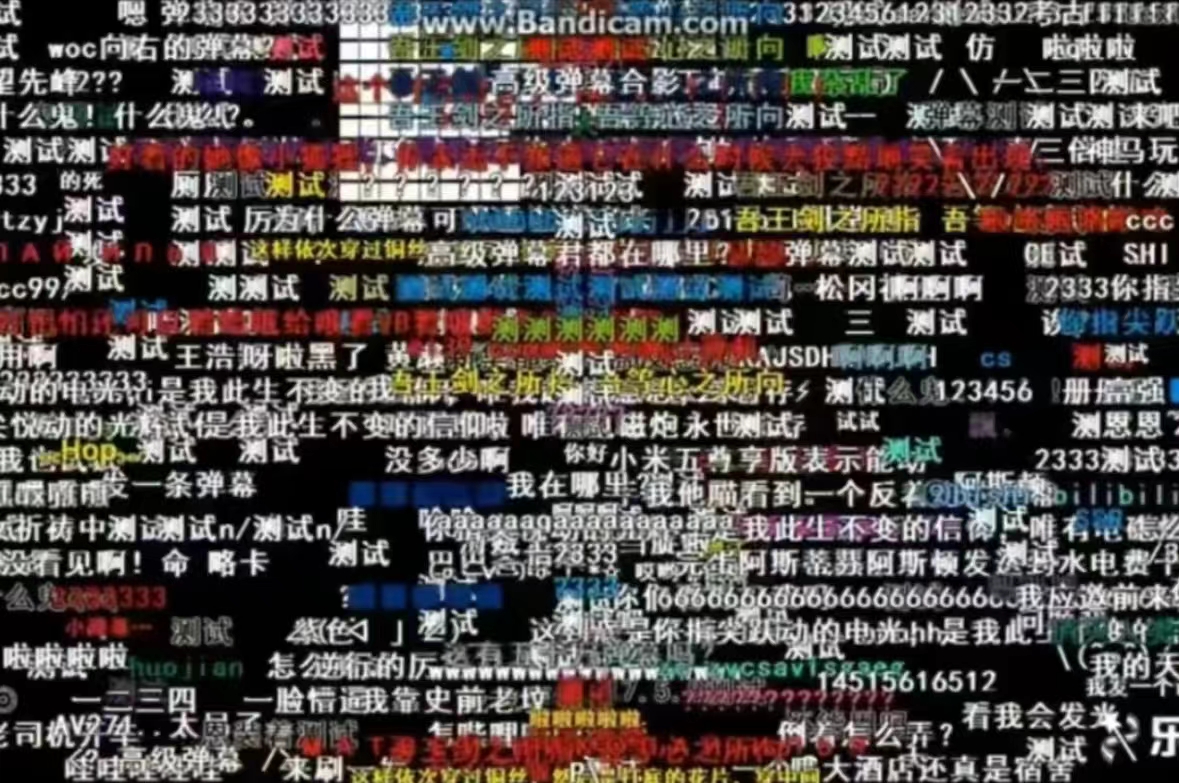
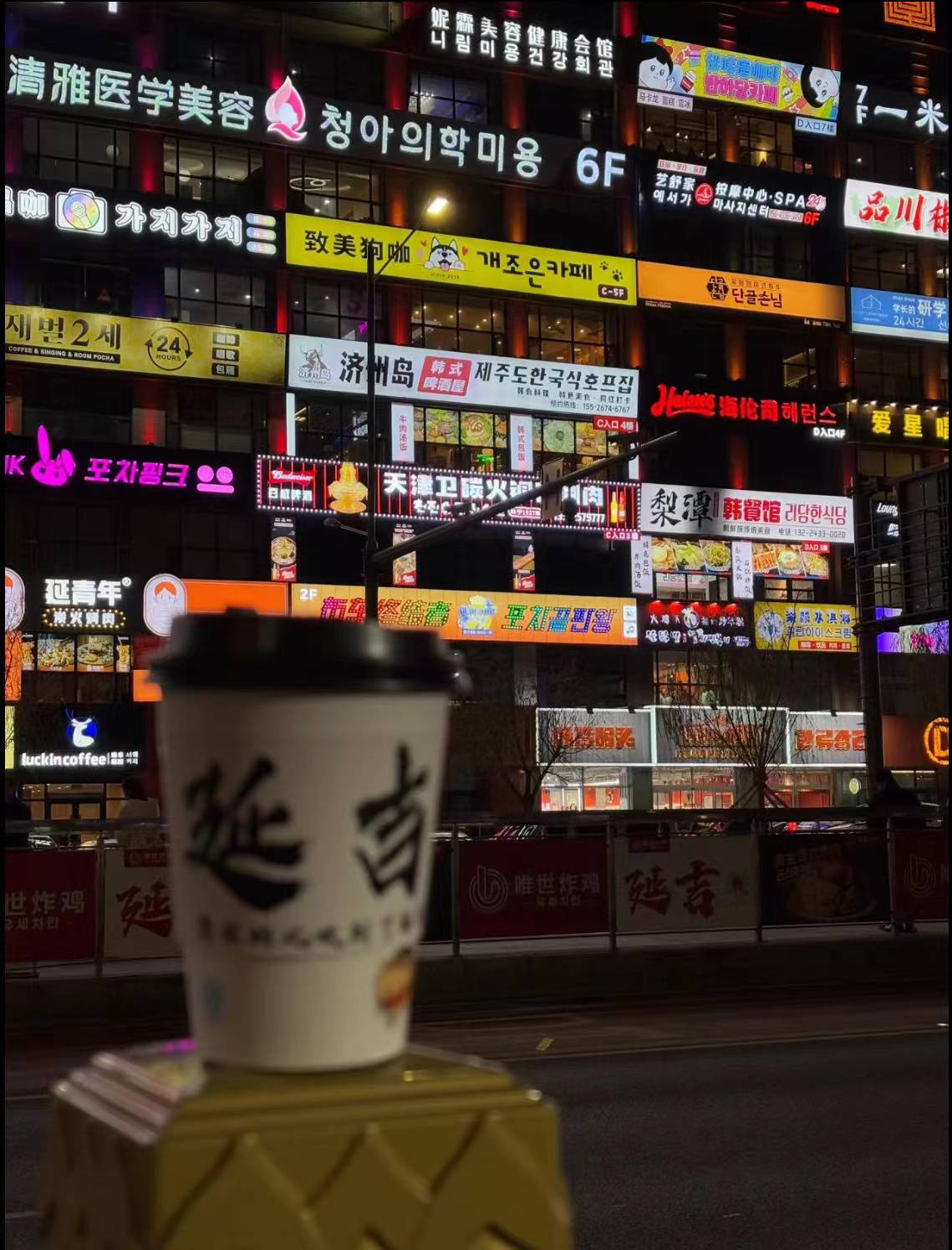
WHY IS THE WANGHONG WALL SO FAMOUS?
It is no exaggeration to say that the Wanghong Wall is the most popular tourist attraction in Yanji. Many visitors from across China travel to Yanji specifically to see this iconic spot. So why is it so famous?
The Yanji Wanghong Wall is actually an eight-storey building. As night falls, the Wanghong Wall comes alive with a mesmerising flow of neon lights, painting the cityscape with eye-catching hues. This glittering display stands in stark contrast to the traditional Korean-style architecture at Yanbian University, creating a captivating juxtaposition that embodies Yanji’s unique character as a border city where cultures collide.
Adding to its allure are the bilingual signs adorning the Yanji Wanghong Wall, featuring both Chinese and Korean script. These signs, often promoting local businesses and restaurants, offer a glimpse into the city’s rich Korean heritage and create an atmosphere reminiscent of Seoul’s bustling streets. It’s no wonder visitors often feel transported to South Korea, making the Wanghong Wall a must-visit destination for anyone seeking a taste of South Korean culture without leaving China.
HOW TO GET TO THE WANGHONG WALL?
If you’re looking for a decent Korean meal upon arriving in Yanji, heading straight to the Yanji Wanghong Wall from the airport or railway station will give you plenty of great options.
From Yanji Chaoyangchuan International Airport
The most convenient way to reach the Wanghong Wall from Yanji Chaoyangchuan International Airport is by taxi. You can use Didi, China’s Uber, or queue at the official taxi stand at the airport.
If you’d like to experience public transport, well, there’s no subway in Yanji. However, you can take bus B45 from the airport, ride for eight stops, and get off at Tian Chi Shou Fu. The fare is only 1 RMB.
From Yanji West Railway Station
If you’re arriving by high-speed railway, transportation can be a bit trickier. Yanji West Railway Station is located far from the city centre, meaning that finding a Didi driver may take longer. The station does provide a free shuttle bus to the Yanji Wanghong Wall, but it only departs once fully loaded with passengers. A good strategy is to queue at the taxi stand while also trying to book a Didi to increase your chances of getting a ride quickly.
BEST PHOTO SPOTS FOR THE YANJI WANGHONG WALL
Without a doubt, evening is the best time to visit the Wanghong Wall for photography. For the most comprehensive shot capturing its full essence, stand at the entrance of Yanbian University across the street.
At the university gate, you’ll find numerous local photographers offering their services, charging between 4 to 6 RMB per photo. Some also provide Photoshop editing, which costs 10 to 20 RMB per picture.
One thing to be aware of is the presence of vendors offering photo opportunities with arctic foxes. Most of these are classic tourist scams. While they may claim that there’s no charge unless you take a photo, they often demand payment the moment you touch or interact with the animal. It’s best to avoid these vendors altogether.
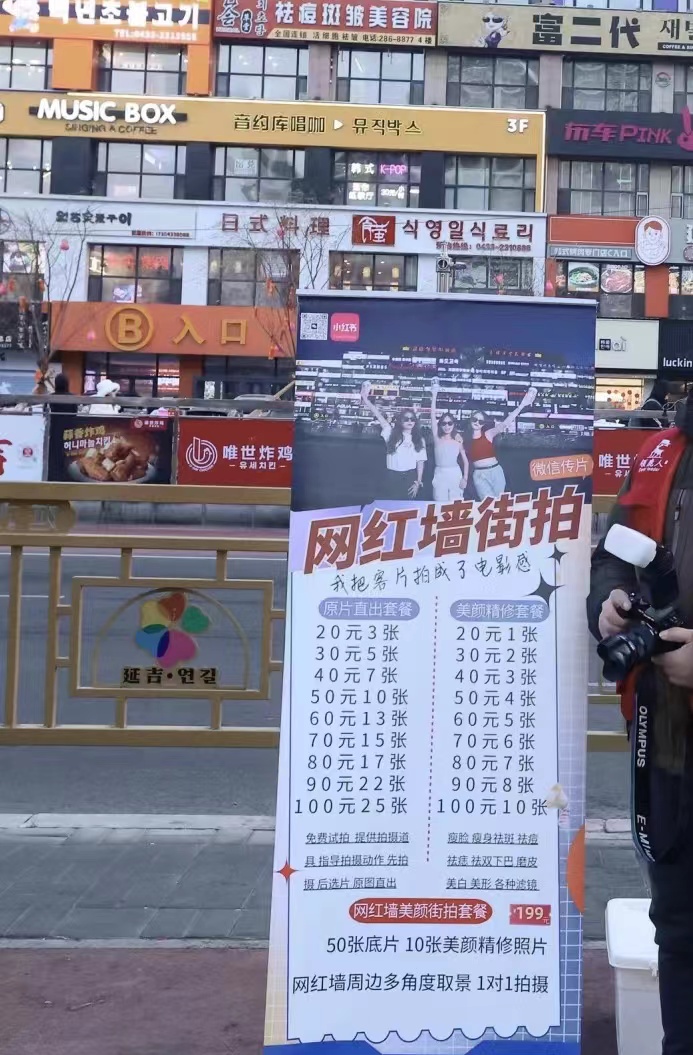
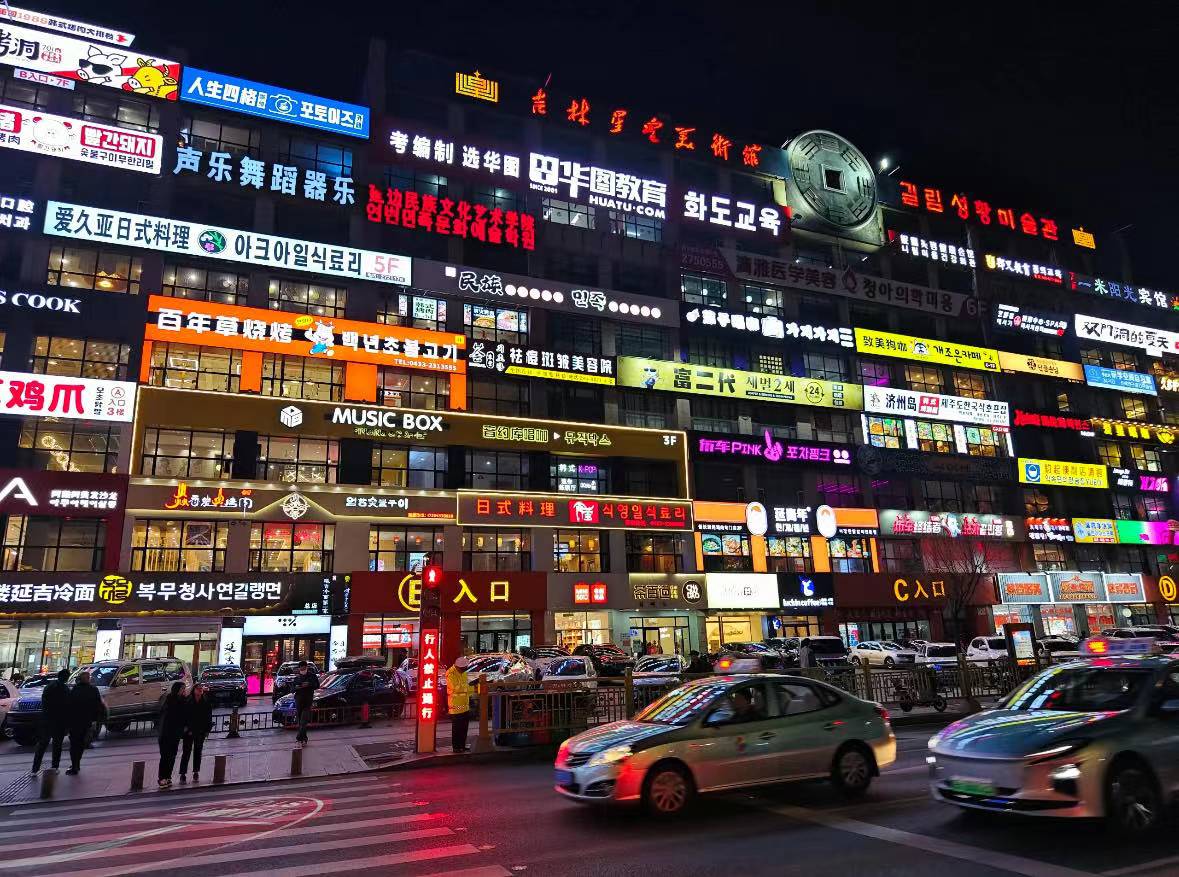
TOURIST ATTRACTIONS NEAR THE YANJI WANGHONG WALL
Yanbian University
Directly opposite the Wanghong Wall, Yanbian University is a well-known attraction featuring traditional Korean-style architecture and museums showcasing Yanbian and the university’s history. However, for foreign visitors, the visiting process can be quite complicated, as entry requires direct contact with the university for special permission.
Yanji People’s Park
If you head east along Gongyuan Road from the Wanghong Wall, you’ll reach Yanji People’s Park in about 1 kilometre. This is a beloved local spot with beautiful scenery and a strong cultural atmosphere. Here, you can see Yanji residents dressed in traditional Korean ethnic attire dancing in the park, offering a glimpse into everyday life in the city.
Shuishang Market & West Market Morning Bazaar
For a more authentic and traditional Korean food experience, you shouldn’t miss the Shuishang Market and West Market morning bazaars. Both are within 2 kilometres of the Wanghong Wall, opening at 5:00 AM and closing by 10:30 AM. However, due to an increase in tourists in recent years, commercialisation has affected these traditional markets, and some vendors have compromised on food quality to meet demand. Be sure to pay extra attention to food safety when shopping.
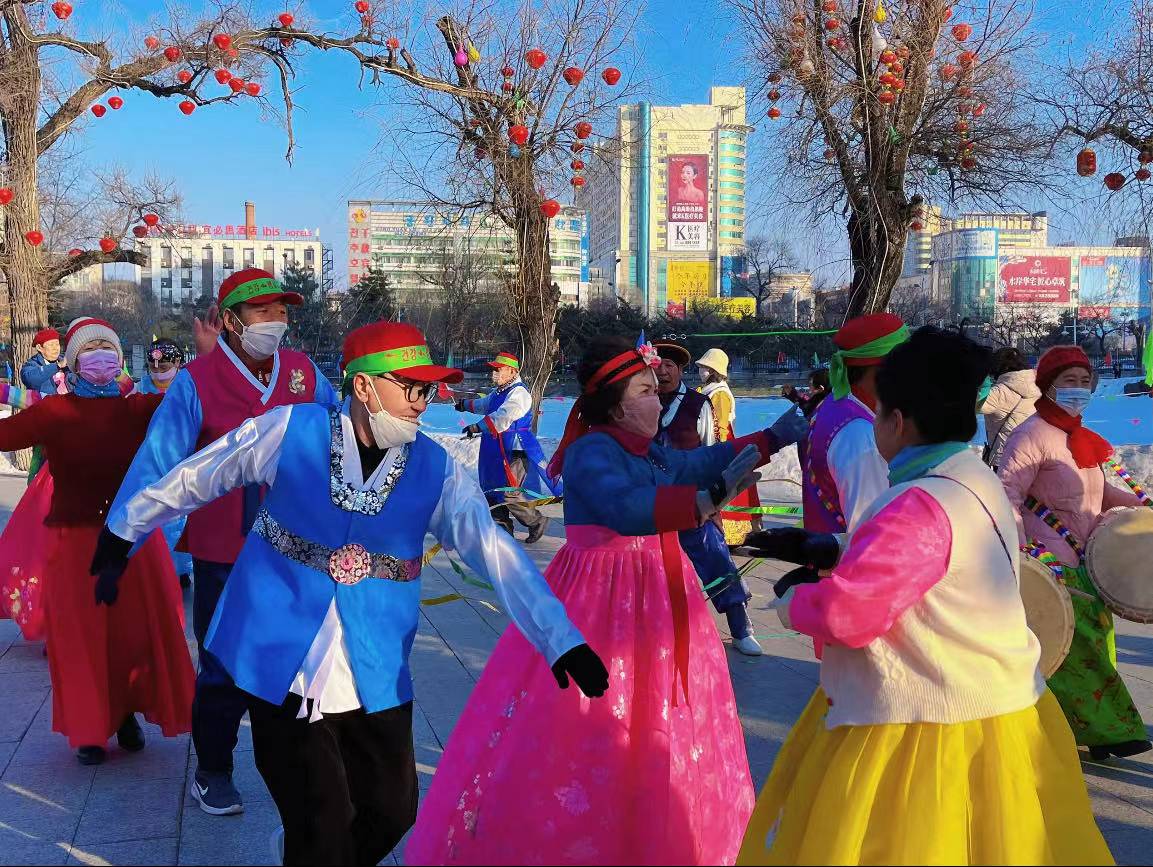
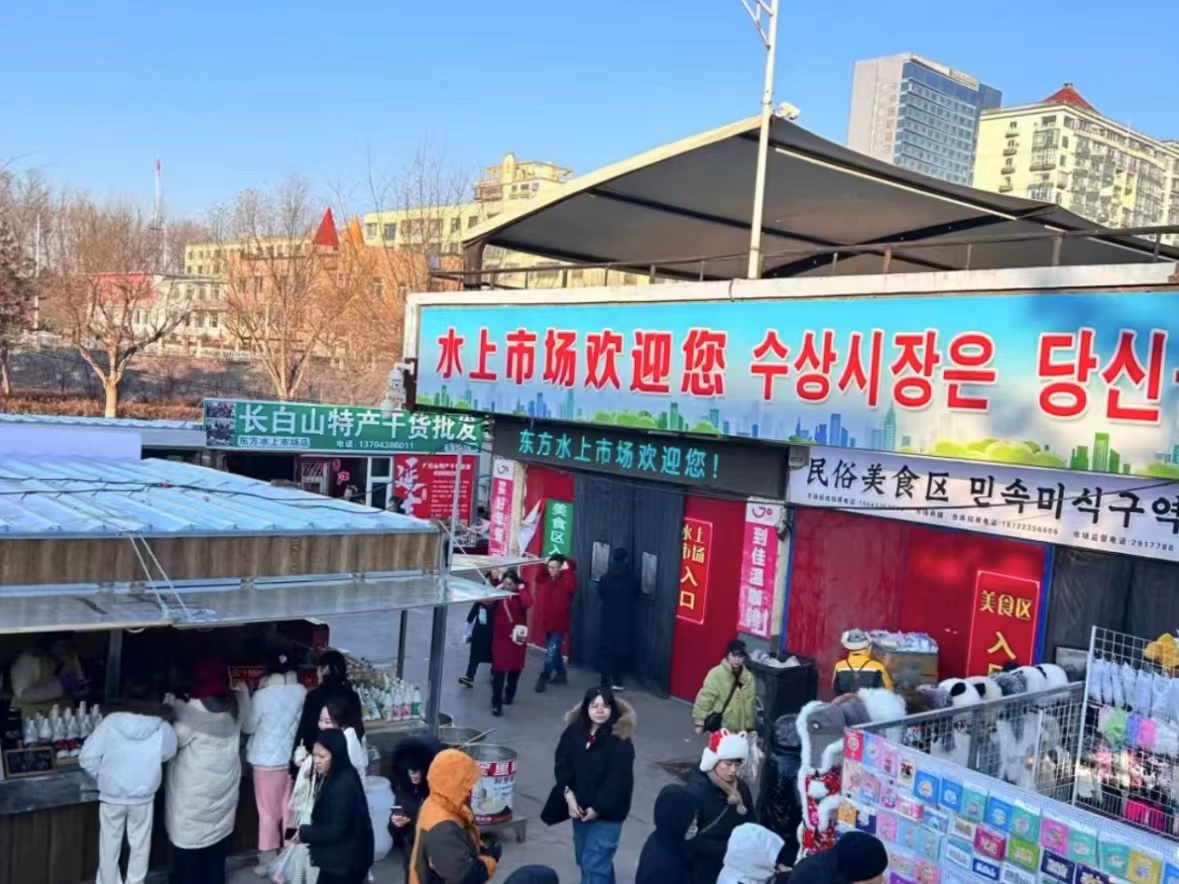
CONCLUSION
The Yanji Wanghong Wall’s popularity stems from its ability to offer a visually stunning and culturally immersive experience. It’s a place where tradition meets modernity, and the ordinary transforms into the extraordinary, making it a true Instagrammable wonderland.
The Yanji Wanghong Wall is undoubtedly a must-visit landmark in the city. Moreover, if you’re planning to travel to Rason, North Korea with YPT, Yanji is an essential stop on your journey.
You can find our upcoming North Korea tours and China tours in the link below, where you can compare the similarities and differences between China’s Korea and North Korea for yourself.





